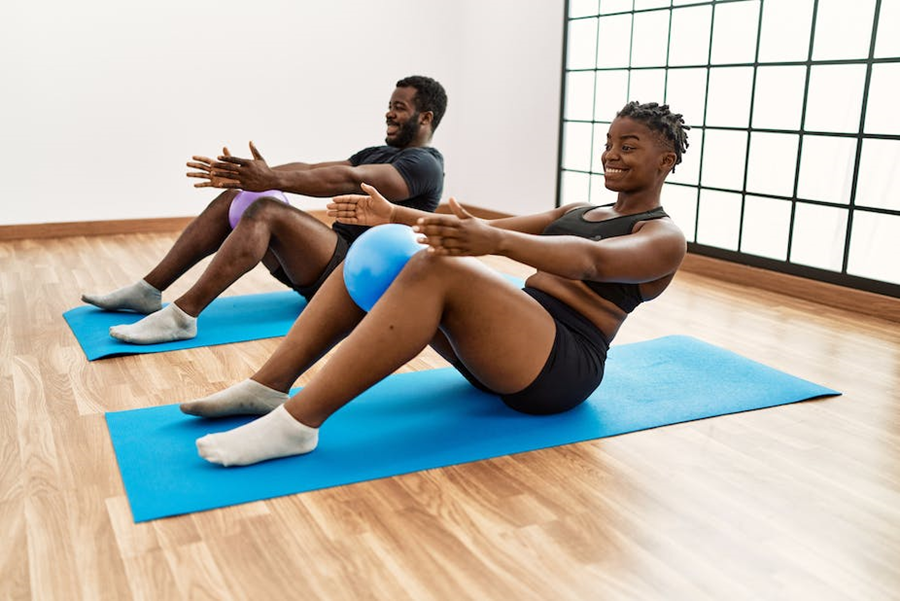Table of contents
- The Benefits of Mind-Body Workouts
- The Growing Popularity of Mind-Body Workouts
- Benefits of Yoga
- Benefits of Pilates
- The Evolution of Mind-Body Workouts
As people have become more health-conscious, there has been a growing interest in mind-body workouts like Yoga and Pilates. These types of workouts focus on connecting the mind and body and improving overall well-being. In this article, we will explore why the focus on mind-body workouts is likely to continue in 2024.
1. The Benefits of Mind-Body Workouts
There are many benefits to practicing mind-body workouts. Firstly, they can help reduce stress and anxiety. Mind-body workouts are designed to help you relax and connect with your body, which can be a great way to manage stress. Secondly, they can improve flexibility and mobility.
Yoga and Pilates both involve a range of movements that help stretch and strengthen your muscles, which can improve your flexibility and mobility over time. Thirdly, mind-body workouts can also help improve your posture. Poor posture can lead to pain and discomfort, but regular yoga or Pilates practice can help strengthen the muscles that support good posture.
2. The Growing Popularity of Mind-Body Workouts
Mind-body workouts have become increasingly popular in recent years, and this trend is set to continue in 2024. One of the reasons for this is that people are becoming more interested in holistic approaches to health and wellness.
They are looking for ways to improve their overall well-being, rather than just focusing on physical fitness. Mind-body workouts offer a way to achieve this by addressing both the mind and body. Additionally, the rise of social media has helped to spread awareness of mind-body workouts, with many influencers and celebrities promoting the benefits of yoga and Pilates.
Benefits of Yoga
Yoga is an ancient practice that originated in India. It involves a series of poses, known as asanas, that are designed to promote physical and mental well-being.

o Benefits of yoga include:
Stress Reduction: Yoga has been shown to reduce stress levels by lowering cortisol levels in the body.
Increased Flexibility: Practicing yoga regularly can help improve flexibility and range of motion.
Improved Breathing: Yoga impacts the importance of deep, controlled breathing, which can help improve lung function and overall respiratory health.
Improved Mental Health: Yoga has been shown to improve symptoms of depression and anxiety by promoting relaxation and reducing stress.
Benefits of Pilates
Pilates is a low-impact exercise that focuses on strengthening the core muscles of the body. Joseph Pilates introduced it in the early 20th century and it has become increasingly popular in recent years.

o Benefits of Pilates include:
Improved Posture: Pilates focuses on strengthening the muscles that support the spine, which can improve posture and reduce back pain.
Increased Flexibility: Like yoga, Pilates can help improve flexibility and range of motion.
Improved Balance: Pilates exercises often require the use of balance and stability, which can help improve overall balance and reduce the risk of falls.
Reduced Risk of Injury: Pilates emphasizes proper alignment and form, which can help reduce the risk of injury during other activities.
3. The Evolution of Mind-Body Workouts
While mind-body workouts like yoga and Pilates have been around for many years, they continue to evolve and adapt to meet the changing needs of practitioners. In recent years, there has been a growing interest in more dynamic and challenging forms of yoga, such as power yoga and hot yoga.
These types of yoga classes offer a more intense workout and can be a great option for people who want to improve their strength and endurance. Similarly, Pilates has also evolved to include more high-intensity workouts, such as Pilates reformer classes. These classes use equipment to provide resistance and challenge the muscles in new ways.













